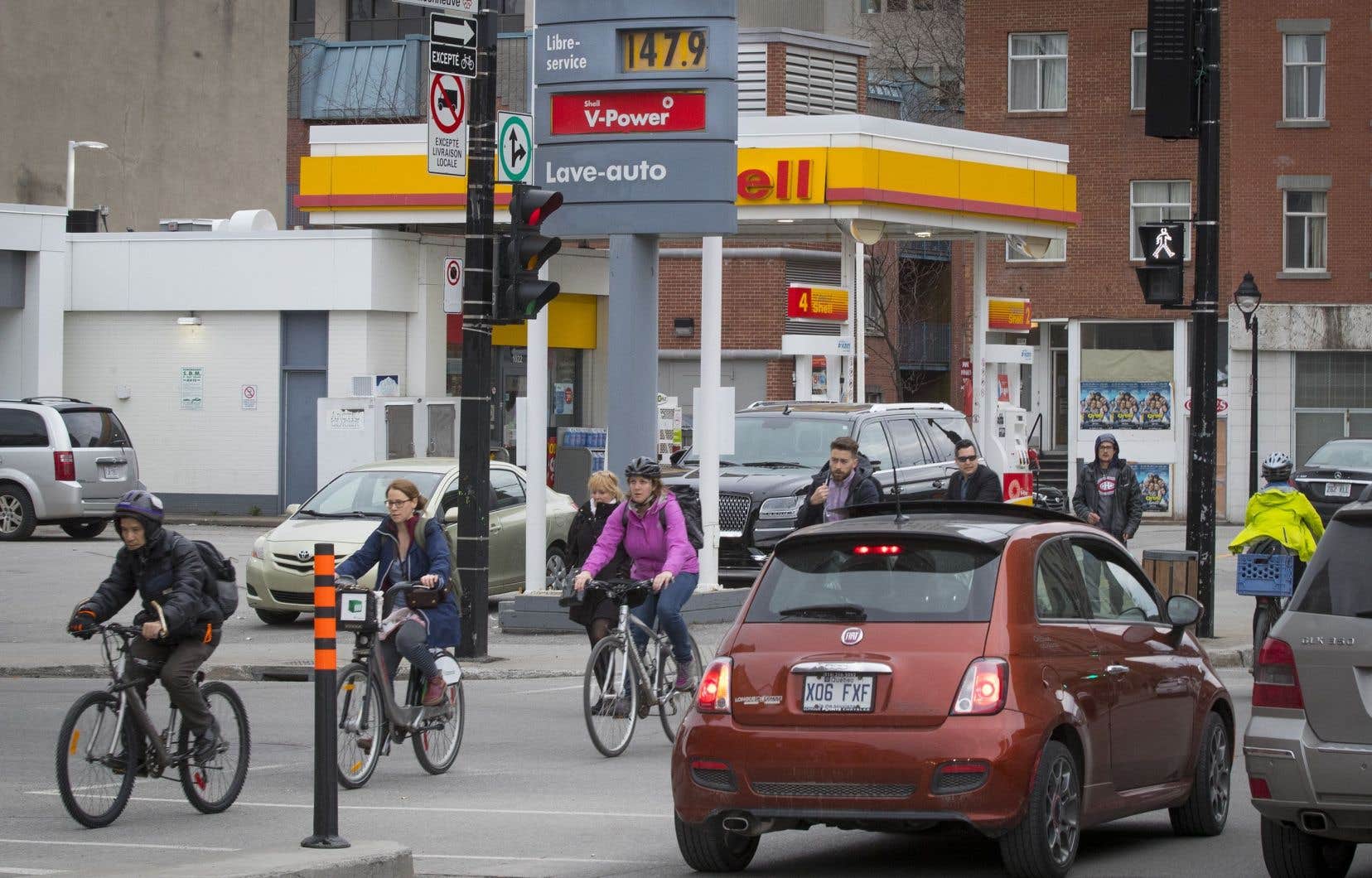People living near a gas station are at “increased cancer risk,” according to a Health Canada report. Despite daily exposure to benzene, a recognized carcinogen, mitigation measures are slow to be adopted.
Those most at risk are those whose accommodation is 20 meters or less from the station. But the emissions can extend to residences located 70 and even 290 meters from a station, a distance beyond which the risks become “acceptable” for human health.
Between 1999 and 2019, ambient air concentrations of benzene in Canada have decreased, especially in urban settings. However, “these average concentrations do not indicate the direct impact of each service station on local concentrations”, can we read in the document, because “no recent study on this subject has been made”.
Yet nearby, residents are not only exposed to the continuous emissions, but also to the benzene fumes released as the station fills up.
Health Canada describes benzene as a “known human carcinogen”. It may be responsible for leukemia, explains the director of the Department of Environmental Health and Occupational Health at the University of Montreal, Sami Haddad.
“Pregnant women, fetuses and children” are particularly vulnerable, notes Health Canada. Indeed, “benzene passes through the placental barrier without problem”, and can thus poison the fetus, confirms Mr. Haddad.
The highest risk is within 20 meters or less of a station, according to the report. However, several residential areas are “only 10 meters from the property limits of service stations”.
At 20 meters, depending on the annual flow of a station, the risk of cancer can rise to 32 cases per million inhabitants. This number may increase if there are several service stations within the said perimeter.
A “worrying” finding that “deserves increased attention,” said Mr. Haddad. “Normally, we say that the acceptable risk is one cancer per million inhabitants. »
Added to this are benzene emissions during the unloading of tank trucks. If we are talking about a high-throughput service station, it can occur “more than 300 times a year”, or “almost daily periodic exposure to high concentrations”, we note in the document.
It would be interesting to “confirm the simulation with measurements”, however, nuances Sami Haddad.
Few mitigation measures
So, what to do when you live near a gas station? It is “difficult to act”, concedes the professor. “In the workplace, people seem to be told to wear a mask with filters during exposure to vapours, but you can’t do that all day long. »
Knowing the unloading time could allow the windows to be closed at the indicated time. Sami Haddad also thinks that a “good ventilation system could help”.
The Canadian Council of Ministers of the Environment has identified several measures to reduce gasoline vapor emissions. But currently, “the majority of provinces and territories [n’ont adopté] no such requirement.
“Several jurisdictions in Canada have not fully implemented the Code of Practice,” Health Canada confirmed by email.
Yet, according to the report, “the use of recovery equipment […] on a tank truck […] would make it possible to recover 50 to 90% of the vapors released during unloading […] and up to 99% of the vapors if the vent pipes are fitted with valves”.
But there is also no “regulation on the presence of valves […] in Canada “. In the United States, it is mandatory.
And since the publication of the report in March, “no decision on risk management has been taken”, indicates by email Health Canada, even if “all the measures noted in the report will be taken into consideration”.
At the time these lines were written, the Régie du bâtiment had not responded to requests from the Dutywhich aimed to clarify the regulations in force in Quebec.
Public consultation
For her part, the press secretary to the Minister of Environment and Climate Change argues that “the Government of Canada has taken measures to reduce benzene emissions from service stations”, without, however, detailing them.
Asked by The duty As for a possible revision of the Canadian Ambient Air Quality Standards, Health Canada explains that benzene is not included in the regulations. However, it “has been identified as a priority pollutant”.
Health Canada will publish in 2023 “draft residential indoor air quality guidelines for benzene for public consultation”. The “provinces and territories” will be consulted “in the coming months”.
In Quebec, “neither the Ministry of Health and Social Services (MSSS) nor Public Health were questioned or consulted in connection with this study and this report”, indicated to the Duty a spokesperson for the MSSS.
The press secretary for the Minister of the Environment and the Fight Against Climate Change did not indicate whether Benoit Charette had read the document.
